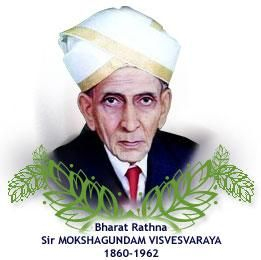The Inspirational Story of Sir M. Visvesvaraya: A Visionary Engineer and Nation Builder
Sir Mokshagundam Visvesvaraya, fondly known as Sir MV, was a man of extraordinary vision and dedication whose contributions have left an indelible mark on India’s progress and development. Born on September 15, 1860, in Muddenahalli, a small village in Karnataka, he rose to become one of the most distinguished engineers and statesmen of his time.
Early Life and Education
Sir MV's journey began in a modest family where education was highly valued despite limited resources. His father, a Sanskrit scholar, instilled in him the importance of knowledge and learning. After completing his early education in Chikkaballapur, he attended the Central College in Bangalore. His exceptional academic performance earned him a government scholarship to study at the prestigious College of Engineering, Pune, where he graduated with a degree in civil engineering in 1884.
Engineering Marvels and Innovations
Visvesvaraya’s career as an engineer was marked by numerous groundbreaking projects that showcased his ingenuity and foresight. One of his early achievements was the design and implementation of an intricate system of irrigation in the Deccan region, which transformed arid lands into fertile fields, significantly boosting agricultural productivity.
His most celebrated work came with the construction of the Krishna Raja Sagara (KRS) dam in Mysore. At the time, it was one of the largest reservoirs in India and a testament to his engineering prowess. The dam not only provided a reliable water source for irrigation but also contributed to hydroelectric power generation, fostering industrial growth in the region.
Contribution to Nation Building
Beyond engineering, Sir MV played a pivotal role in nation-building. In 1912, he was appointed the Diwan of Mysore, a role in which he served with distinction until 1918. His tenure was marked by comprehensive reforms in education, industry, and infrastructure. He established the Mysore University, modernized the state's administrative machinery, and promoted industrialization, laying the groundwork for Mysore's transformation into a progressive state.
Vision and Legacy
Sir MV’s vision extended far beyond his immediate projects. He believed in the power of education and technical training to drive national development. His emphasis on creating institutions of learning and research, such as the Government Engineering College in Bangalore (now known as University Visvesvaraya College of Engineering), underscored his commitment to empowering future generations.
In recognition of his invaluable contributions, Sir M. Visvesvaraya was knighted by King George V in 1915 and awarded the Bharat Ratna, India's highest civilian honor, in 1955.
An Enduring Inspiration
Sir M. Visvesvaraya's life is an enduring source of inspiration. His story teaches us the power of vision, dedication, and relentless pursuit of excellence. He demonstrated that with determination and hard work, even the most daunting challenges can be overcome.
As we celebrate his legacy, we remember Sir MV not just as a brilliant engineer but as a true nation builder whose contributions continue to inspire and guide us towards a brighter future.
Conclusion
The story of Sir M. Visvesvaraya is a beacon of hope and motivation. His achievements remind us that greatness is not merely a product of talent but of perseverance, innovation, and a deep commitment to serving humanity. As we reflect on his life, let us strive to embody his spirit of excellence and dedication in our own endeavors.
Call to Action
Let us honor Sir MV's legacy by fostering innovation, pursuing knowledge, and contributing to the betterment of society. His life is a testament to the fact that with vision and hard work, we too can build a brighter, more prosperous future.

kishore narayan
Delete Comment
Are you sure that you want to delete this comment ?
Monika Agarwal
Delete Comment
Are you sure that you want to delete this comment ?
Nandini Singh
Delete Comment
Are you sure that you want to delete this comment ?
Aditi Chatterjee
Delete Comment
Are you sure that you want to delete this comment ?
Khush charith
Delete Comment
Are you sure that you want to delete this comment ?
manu _0089
Delete Comment
Are you sure that you want to delete this comment ?
vijay km
Delete Comment
Are you sure that you want to delete this comment ?
Niveditha S
Delete Comment
Are you sure that you want to delete this comment ?